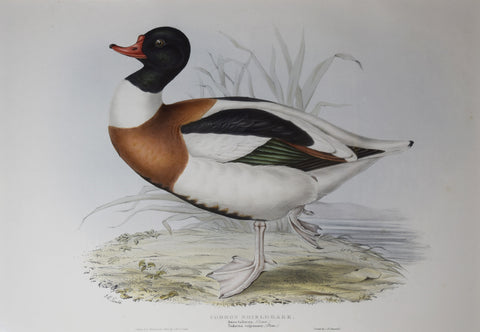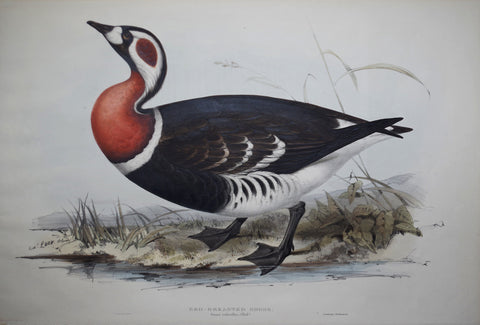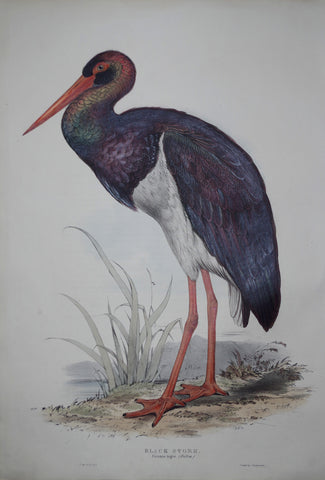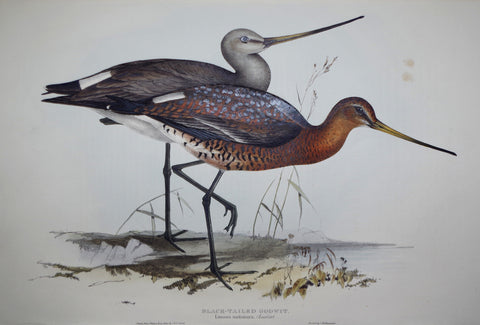
John Gould (1804-1881), Common Shieldrake
John Gould (1804-1881)
Common ShieldrakeFrom Birds of Europe
First edition: London, 1832-37
Lithographs with original hand color
Paper size: 14 ½" x 21 ½"
Framed size: 25 x 30 5/8”
John Gould was without question the most prolific ornithological artist of the 19th century, and the only one to rival John James Audubon in ambition and quality. The 19th century was a time of intense fascination with discoveries in natural history, especially regarding knowledge of the wildlife of exotic lands. Gould shared the romantic enthusiasm of his time for such subjects, as well as the popular impulse to catalogue wildlife. He combined his passion for natural history with outstanding scientific, artistic, and entrepreneurial talents, and embarked on a series of projects that would eventually make him the leading publisher of ornithological illustrations in Victorian Britain. Gould's unparalleled career spanned five decades, and he produced a monumental series of books of birds throughout the world.
From the time he took up taxidermy in his early teens, Gould was devoted to recording bird life, either as he observed it personally or as it was reported to him by other ornithologists. He procured the scientific information through extensive correspondence, travel, and field research. The preparatory drawings that he produced were passed on for completion to skilled illustrators, most notably his wife, Elizabeth, and Edward Lear. The plates which resulted were a splendid fusion of art and science, with a scope than remains unsurpassed.
These splendid lithographs of ducks originated in Gould's "Birds of Europe," and serve as prime examples of Gould's best work. One of the most accomplished and engaging natural history works of the 19th century, The Birds of Europe was also the first of Gould's works to feature plates by Edward Lear. Gould undertook this work partly in an effort to redress the imbalance between the study of local and foreign ornithology. In his preface he stated his mission: "The Birds of Europe, in which we are, or ought to be, most interested, have not received that degree of attention which they naturally demand. The present work has been undertaken to supply that deficiency." Gould portrayed birds native to Europe in a manner that had only been thought appropriate for the colorful species of distant places. In this way he managed to draw much popular interest back to native birds, which were suddenly considered equally beautiful to exotic species.
We Also Recommend





